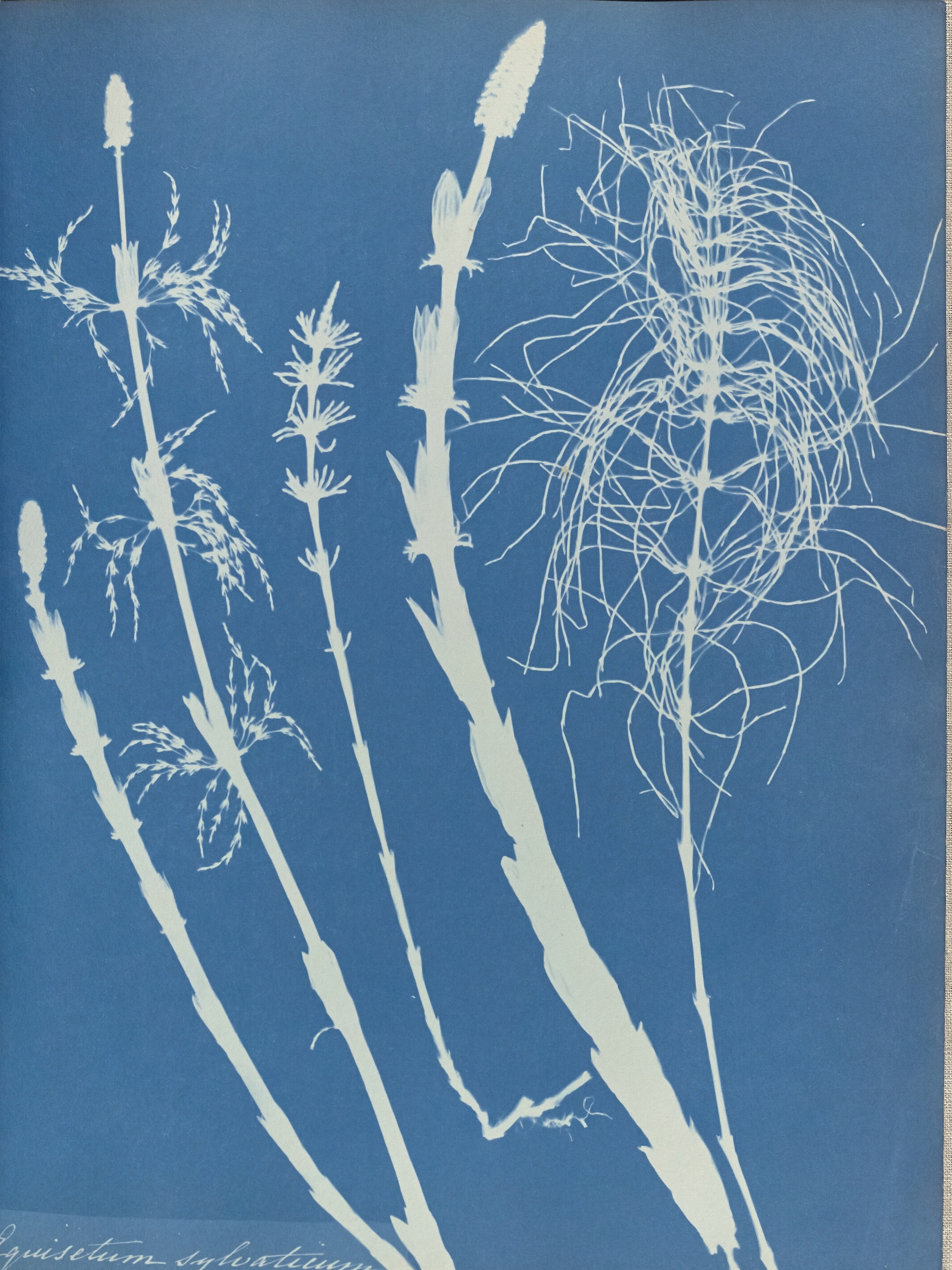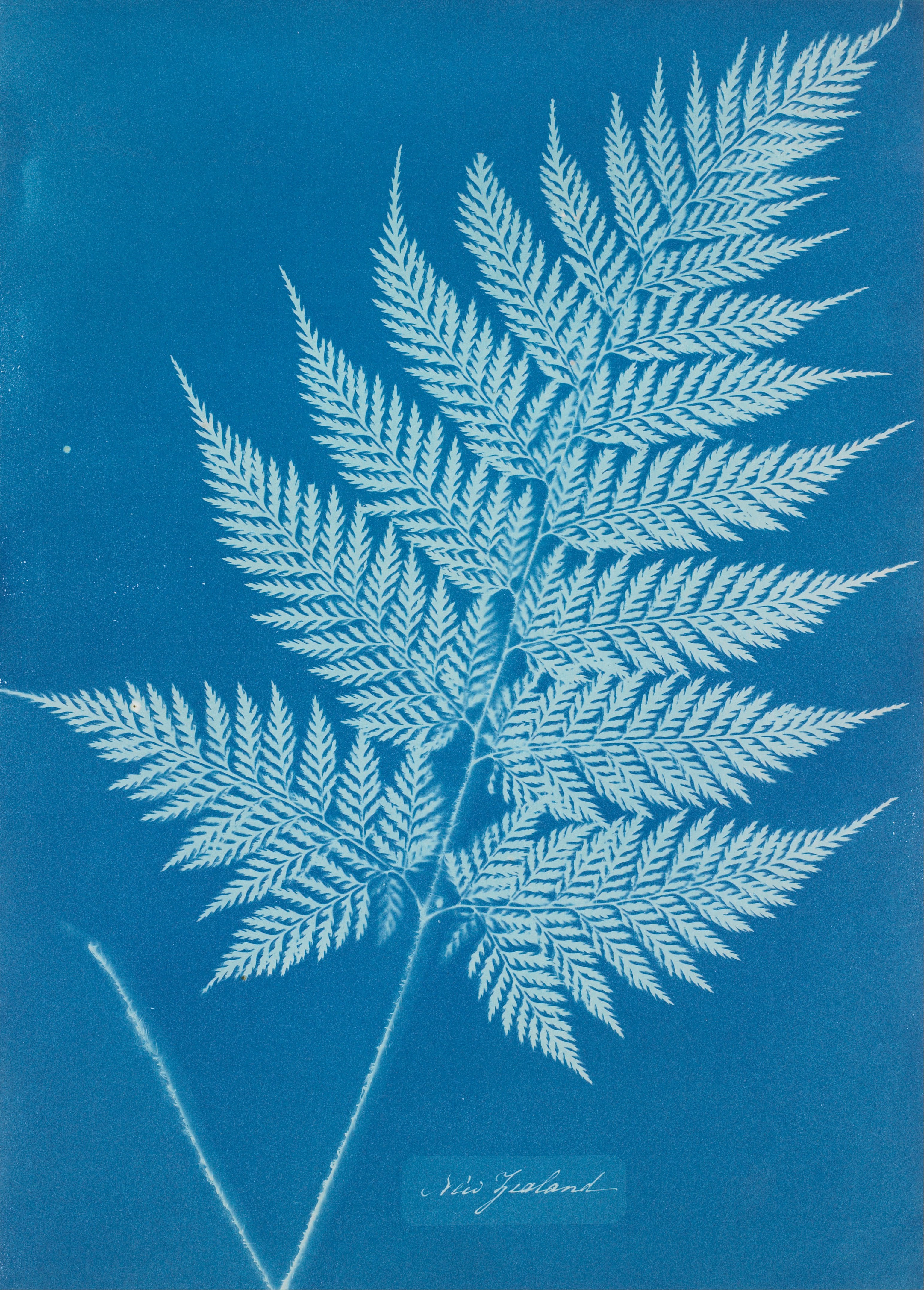On this day in 1799, a dedicated British amateur botanist, Anna Atkins, was born. Atkins was the first person to publish a book illustrated with photographs—British Algae: Cyanotype Impressions, which took Atkins 10 years to complete. All of the book's imagery, and even its text, was created using the cyanotype photographic process. To make a cyanotype, objects such as this horsetail (Equisetum) are placed directly on photographic paper. When exposed to light, the paper reacts and deepens in color, except where the paper’s surface is obscured. Atkins created thousands of cyanotypes during her study of the natural world. The resulting print is called a cyanotype because of the blue color produced by the chemicals. Because the specimens were solid objects that light could not pass through, they appeared as negative images.
Anna's husband, John Pelly Atkins, was a friend of William Henry Fox Talbot. She learned directly from Talbot about two of his inventions related to photography: the "photogenic drawing" technique (in which an object is placed on light-sensitized paper and exposed to the sun to produce an image) and calotypes. She was known to have had access to a camera by 1841, and some sources say that Atkins was the first female photographer.
We present this story as a part of our celebrations of Women's History Month.
P.S. Anna Atkins' works are featured in our Women Artists 50 Postcards Set, which you can order here :)
P.P.S. Meet Maria Sibylla Merian – an illustrator who changed the science!


 Anna Atkins
Anna Atkins